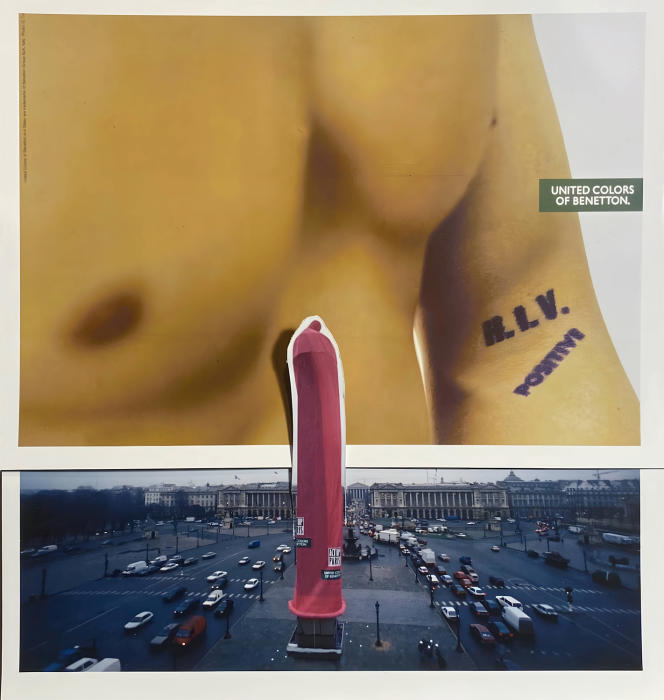Find all the episodes of the series here “Fashion at the helm”.
On that day in December 1994, Martine Karsenty-Ricard urged her father, Jean-Pierre, founder in 1955 of the family law firm, to accompany her to the tribunal de grande instance of Paris. ” I felt alone “, remembers the lawyer, at the time young forties. At the heart of the matter, a global advertising campaign by his client Benetton. Unveiled on September 15, 1993, imagined by Oliviero Toscani, favorite collaborator of the Italian company until 2020, it comes in three photos. Each shows, in close-up, an area of HIV transmission. An arm. A pubis. Buttocks. All struck on the white skin of a purplish tattoo “HIV positive” in capital letters. On the right, in white on a green background, the signature slogan: “United Colors of Benetton”.
“At the hearing, the public was terribly hostile and heated by calls for a boycott”recalls M.e Karsenty-Ricard. Since the launch of the campaign a year earlier, Benetton has indeed suffered the blows. The world And Le Figaro refused to publish the images, some shops were covered in graffiti, polls indicated consumer disaffection, and a minister from the ranks of the right, Lucette Michaux-Chevry, even suggested to the French to“Tear Benetton sweaters off those who wear them”…
In September 1993, the French Agency for the Fight against AIDS had attacked the same campaign in civil “use of degrading images”, and the action had been ruled inadmissible. Indeed, “the legislative and constitutional consecration of the principle of the dignity of the human person took place in July 1994, and it constitutes new ground”, resituates the legal historian and professor at the Ecole Normale Supérieure Jean-Louis Halpérin, author of The Benetton Affair (LGDJ, 2017). In 1994, it was three HIV-positive French citizens, Erik David, Erick Eme and Elisabeth Da Paz, who filed a complaint this time, supported by the association for the fight against AIDS Aides, for violation of the right to privacy and responsibility civil.
Oliviero Toscani, a “libertarian radical”
Justice, Benetton knows. In 1984, Luciano Benetton entrusted Oliviero Toscani with the task of imagining his campaigns, and these offended a number of sensibilities. The Italians have not digested the kiss between a priest and a nun; Americans felt that the cliché of a white baby being breastfed by a black woman glorified slavery; the British tried to ban the photo of Giusy, a newborn covered in blood and amniotic fluid, umbilical cord visible; the Saudis were outraged by three kids sticking their tongues out…
You have 64.2% of this article left to read. The following is for subscribers only.
